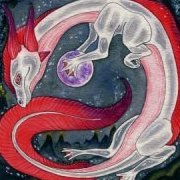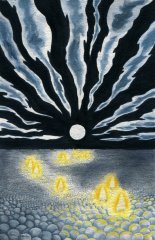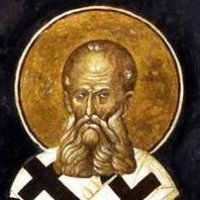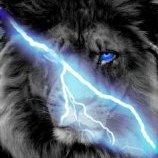Search the Community
Showing results for tags 'cognitive'.
-
Here we go : Question 1 : Distance are different in the cognitive and the physical realms. And much less in the cognitive realm but considering that time travel to the past is impossible, one cannot travel faster than light in the cognitive realm, implying that the speed of light ( maximum traveling speed) in the cognitive realm is smaller than in the physical realm. Would that be correct? Of course it would still make travel faster but dependent on the maximum speed that can be reached. Like if we assume that a character travel from Roshar to Scadrial and the two planets are say 5 light years appart he would take 5 years of relative time to travel through the cognitive realm? Question 2 : Time in the Cosmere on the physical realm is also relative. As proven by the ability of investiture to affect speed of time ( Chromium and Bendalloy) Fundamentally it doesn’t create time travel into the past complications consideting that it s very similar to time relativity on earth. But does a time dilatation in the physical realm affect the cognitive realm. Basically is there a superposition of Realms or not. And if so does that mean that someone using a bendalloy/chromium in a place of the physical realm could freeze someone traveling through the cognitive realm ( and or make them speed up). Which could create time travel complications if the speed in the cognitive realm is C ( relative to the physical realm obviously) Question 3 : If there is no superposition of Realms what would happen if one were to open a perpendicularity in a Bendalloy/Chromium bubble? By the way i m willing to learn i m an imbecile and don’t understand anything to realmatic magic
-
So I had a thought while answering another thread. I wonder if Returned could heal injuries by thinking them away. We see Vivenna altering her personal appearance including adding a scar to her face as a disguise. The scar goes away once she drops the guise, so adding and removing that kind of "injury" is within Vivenna's and presumably Vasher's abilities. I wonder if a Returned could convince themselves that they hadn't been injured even though they really had, if they could heal themselves by reasserting their perception of a undamaged body. We see Kelsier's Cognitive Shadow get beaten up until he's on the ground expecting broken bones, but the pain is a function of his mind thinking he should be hurt. Would this be something only a Returned or one of their descendants could do? Any thoughts? It's made me wonder for a while now that the Investiture specifically noted to be tied to life is the worst at healing, with the only major case being when a Returned uses their Divine Breath to heal someone. For crying out loud Vasher deliberately dumps BioChroma into people he intends to immediately kill.
-
So I’m listening to the spoiler livestream (no quotes/spoilers here, don’t worry) and @Jofwu asked a question that inspired a new idea that I’m rather taken with. We know that BaM is/was connected to all the Spren on Roshar. We know that basically everything that the people on Roshar have a cognitive ideal of has an associated Spren. Spren are certainly things/beings that people on Roshar think about and have ideals around… Could it be that BaM is/was the Spren of Spren? (And possibly Spren of Spren of Spren of Spren of Spren…) thus explaining (at least in part) the connection to all Spren? And if not, does such a meta-Spren exist? Do we have any WoB’s on this? And if not, what are your thoughts?
- 2 replies
-
- ba ado mishram
- spren
-
(and 1 more)
Tagged with:
-
Sorry if asked already, but I was re-reading Rhythym of War, and the parts where certain Chars can see into shardesmar made me wonder what would they see if they looked into shadesmar/cognitive realm to see what an Honorblade looks like there.
- 6 replies
-
- honorblade
- shadesmar
-
(and 1 more)
Tagged with:
-
Cognitive Reflections After speaking with people online I have become obsessed with the way people’s beliefs, perceptions, and interpretations effect the cognitive realm. My question If a blind man makes a bowl with no clue what material it is, what does the cognitive representation look like? What color is it? What happens if he tells people in town about this beautiful purple bowl he made? What if he then brings the bright red bowl to town? The Applications What happens when this same man makes a sword from material he believes whole heartedly can store stormlight (or some other effect)? Thoughts? What could be made? What can be done with this knowledge? Thank you in advance!
-
EVERYBODY NEEDS TO READ MISTBORN SECRET HISTORY. I just started reading it and it has explained so mush about anything from Hoid to Thaidakar.
-
Does anyone know who Thaidakar's master is? In RoW Mraiz talks about how his master is Thaidakar but he also has a master. Thaidakar being a cognitive shadow really the only higher rank would be godhood. Which would also mean that the ghostbloods are ruled by a god. Any thoughts?
- 15 replies
-
- ghostbloods
- thaidakar
-
(and 8 more)
Tagged with:
-
I think I have a theory as to how shards work. I'm sure this has been spoken about, but I don't know where. Shards, blades specifically, are solid stormlight/investiture. Spren can become shardblades, and the common theory as to shardplate is that spren form it, like by Kaladin, windspren by the hundreds surrounded him. Spren are bits of stormlight/investiture given sentience. Therefore, Shards are stormlight. They could cut, I suppose, by separating the sould of the object, but I think Brandon mentioned it in one of the the books. Shardblades can be summoned because of the sentience. It would explain why shardplate cannot be summoned and dismissed - there is no sentience. Because that's the only difference between the two. In theory, then, if one could find a way to make stormlight solid, one could make virtually indestructable objects.
-
Would Nightblood have a bead, a flame, or something different all together in shadesmar?
-
Hello! While I was doing scripture study, (I'm LDS) something huge hit me! I realized that in Doctrine and Covenants 130, it has a lot of things that are extremely reminiscent of things seen in Oathbringer. For example, it mentions in verse seven a "sea of glass and fire." This sounds exactly like the cognitive realm, where the sea was made of glass beads (objects) and fire (souls). This was very peculiar to me, but connections go even deeper. Take verse eight for instance "The place where God resides is a great Urim and Thummim" In Hebrew, Urim and Thummim means "light and perfections." This blew my mind, because the spiritual realm is where stormlight comes from and where everything is the perfect version of itself. These are the only connections I've made so far, but I think there might be more. I really like this stuff and it gets me really excited! Does anyone else have any ideas about other connections to LDS or thoughts?
-
From the album: Shadesmar
My basic illustration of the Rosharan cognitive realm. Part of my series on the cognitive realm. I want to to them as "land/sea" scapes. Enjoy!- 5 comments
-
10
-
- cognitive realm
- cognitive
-
(and 1 more)
Tagged with:
-
From the album: Stormlight By Jemma
"Unite Them!" Dalinar Kholin. This is a scene that takes place in Oathbringer . On the left is the cognitive realm Shadesmar, the center represents the physical realm, and the right is the spiritual realm. There's no real description of the spiritual realm, but in the world of the Cosmere, it's the breaking spirit that allows the investiture of magic. As such, I decided to represent it by shattering as it reflects Dalinar's broken--but undefeated spirit. This was a blast to work on and I'm glad I was able to find the time to finish it!- 9 comments
-
28
-
Do you think that transgender individuals in the Cosmere would be the result of a mismatch between their Physical and Cognitive aspects? If such a person became a KR or Returned, would they change biological sex?
-
For some months now, I’ve been working on creating a framework for all of the magic systems of Roshar that combines everything we know about them and makes predictions for that which we don’t know. This topic is the end result. Since I’m aiming for completeness, there will be things here that are already well understood, as well as things that I haven’t seen proposed before. So, with apologies for the sheer length that it has become, allow me to present my framework. Magics by Shardic Composition Let's start by listing the various Rosharan powers and classifying them by the Shards which power them. Magic Shardic Composition Surgebinding Honour & Cultivation Ancient Fabrials Honour & Cultivation Modern Fabrials Cultivation Old Magic Cultivation Voidbinding Honour & Odium Voidbringer Powers Cultivation & Odium Surgebinding My classification of Surgebinding shouldn't be raising any eyebrows since it is well understood that each type of Radiant spren is some mix of both Honour and Cultivation. However, let's take a moment to consider how the two powers manifest in Surgebinding as this will provide insight into how I've classified the other magics. While there are many different interpretations of honour, they ultimately all come down to the interaction between two or more people: in a universe with only one person, it would be impossible for them to act honourably (nor to act dishonourably), for there would be no one for them to act honourably towards. This duality is reflected, I believe, in Honour's magic. The most obvious example of this would be the necessity to bond spren in order to perform it. Now, you could argue that since the listeners were bonding spren long before the Shards came to Roshar, this would mean that bonding spren is not related to Honour specifically. However, the listener bond is, by its very nature, very different to the Nahel bond; seemingly less a mutually beneficial partnership, and more a natural process. I would contend, therefore, that this is an example of Honour incorporating this aspect of the Rosharan environment into his magic out of necessity. I do not think that this idea of duality is limited only to the bonding of spren, however; I think that it extends even to the way that the powers form. You likely noticed that in my listing of the various magics that there is no system that is entirely of Honour. I think that Honour's nature means that he requires a second Shard to mix his power with in order to form a magic system. In other words, it would not be in his nature to form a magic that is purely his own. Another example of Honour's effect on Surgebinding is in its structure: the way that Surgebinders are divided up precisely into distinct predetermined Radiant Orders based off of their interpretation of honour, and their determination to emulate that ideal. And also, the way that the powers are divided up between the different orders. This is a rigid and inflexible framework, much like the Radiant’s Ideals can be. In short, this is where the "binding" in Surgebinding comes from: Honour is bound to another Shard and the Radiants to their spren, their Orders, and their Ideals. So if Honour provides a structure to Surgebinding, what does Cultivation provide? I think that it is through Cultivation that Surgebinders get to manipulate the Surges. If we look at the spren associated with each of the Shards, Honour's spren are those of emotion, again linking back to human interaction. Cultivation's spren, however, are the spren of nature, so it makes sense that it is Cultivation's power that gives access to the natural Surges. Now, I can imagine it being argued that since on Scadrial, all the magic systems revolve around metals, surely all the magic systems of Roshar should likewise revolve around the Surges, not simply the ones associated with Cultivation. However, I would argue that this is a false analogy: the metals on Scadrial act as a focus, the Surges on Roshar do not. The powers produced by the Metallic Arts (with the exceptions of Allomantic iron, steel, aluminium, and chromium) are not related to metal themselves. Therefore, whilst all of the Rosharan magic systems should share a common focus, it should not necessarily be the case that they all share the Surges. Modern Fabrials Now with that established, it should be obvious why I think that Fabrials are a magic system purely of Cultivation. They lack the rigid structure that I have associated with Honour, and while the spren are still part of the magic, they are trapped inside the gemstones rather than working with the user as you would expect in Honour’s magic. This leaves Cultivation as the only reasonable candidate, which in turn means that they must be utilising the surges in some way. Although, without the rigidity of Honour’s framework, the way they manifest is apparently quite different. Ancient Fabrials The first thing to note here is that these fabrials do not seem to have much in common with modern fabrials, to the point that I suspect that calling them fabrials at all is a misnomer. Modern fabrials all function by trapping a spren in a gemstone, ancient fabrials do not appear to do this. Spren are clearly involved in some way, just as they are in every other magic; we in fact see this in the operation of the Oathgates. In order to activate them, you need a Shardblade, i.e. the physical manifestation of a spren that is part Cultivation and part Honour. Moreover, the spren needs to be alive. This implies that the person operating the Oathgate needs to be working together with the spren, which sounds just like an Honour based magic. This would mean that the ancient fabrials are far more closely related to the Surgebindings than they are to modern fabrials. Which makes sense given that the effects we have seen (Soulcasting, Regrowth, Transportation) appear to be the same as various Surgebindings. In fact, when Nale heals Szeth with one of these ancient fabrials, he actually refers to it as a Surgebinding. Ideally I would compare the operation of the Oathgates to that of other ancient fabrials, unfortunately though, we haven’t really seen enough of these yet to be able to draw anything meaningful from them. The Old Magic This isn’t a magic like others on this list: it's not something that people can perform; instead, it seems to be practised solely by the Nightwatcher, about whom the only things we can really say with confidence are that she is some kind of “mega-spren”, closely related to Cultivation. This would suggest then that the Old Magic can be described as similar to a sapient, self-operating fabrial. I don’t think that there’s much more that can be said at this point without additional information about the Old Magic or the Nightwatcher. Voidbinding This brings us to the only magic system on the list which I believe to be unrelated to Cultivation. If we look at the Voidbinding chart from the back of The Way of Kings, it is immediately obvious that the structure of the magic is the same as Surgebinding. It even has "binding" in its name, hence why I think that it is of Honour. However, if we look at the symbols where, on the Surgebinding chart, the Surges are placed, we see not the symbols for the Surges, but a twisted version of them. Hence I do not think that Voidbinding will be related to the Surges at all, and hence Cultivation has no part in Voidbinding. Voidbringer Powers And finally, we come to the powers that were demonstrated at the end of Words of Radiance by the Voidbringers. Why do I think that this isn't Voidbinding? We have a WoB that we haven't seen Voidbinding yet, but we have seen these powers, therefore they must be something different. Additionally we have the following WoBs: Since the Voidbringers are forms of the Parshendi, and the Parshendi are not of Honour, if my classification of Voidbinding as being of Honour is correct, then the Voidbringers cannot be Voidbinders. So, why do I think that the Voidbringers are related to Cultivation rather than purely of Odium? If we have a look at Dalinar’s vision of the Purelake, we see him looking for a voidspren, which ultimately ends up animating a thunderclast. The voidspren is described to him as: “A spren that doesn’t act like it should”, not as a new type of spren. And apparently this is a result of the spren interacting with Sja-anat, an Unmade. What’s more, the spren they end up chasing has a resemblance to a riverspren, a type of nature spren, which is therefore related to Cultivation. I would propose, therefore, that the Unmade corrupt spren to make voidspren. When the spren was originally of Cultivation they go on to form Voidbringers and thunderclasts and the like. And when the spren was originally of Honour, they will bond to form Voidbinders. On Initiation The first thing to note here is that not all magics require an Initiation in order to be used. Some, such as Haemalurgy, are universal and can be used by anyone. Modern fabrials also seem to fall under this category. In order to use a magic, you need three things: intent, Investiture, and a focus. In the case of fabrials, the Investiture and the focus are both incorporated into the device itself. In other words, the user only needs to provide the intent to use the fabrial in order for it to work. The crucial part here is that the user does not need to access an external source of Investiture themselves: the fabrial does that for them. The Old Magic is not relevant to this discussion since it is restricted to the domain of the Nightwatcher. Also, I don’t think we’ve seen enough of the ancient fabrials yet in order to determine whether they would also be universal or not, so, for the time being, I’ll pass over these two magics. The remaining magics all seem to require Initiation. Khriss’ comments on Initiation in Elantris’ Ars Arcanum suggest that the method of Initiation across all of the magics on any given world is consistent. I think it should be fairly obvious, therefore, that the method of Initiation here is the spren bond. All of the remaining magics utilise a spren bond in some form, and Syl has openly admitted to Kaladin that she is the reason that he is able to Surgebind. On the Rosharan Focus So far I’ve seen theories on the focus claim that it’s either the gemstones, or the spren, or the spren bond. Firstly, I don’t think that it can be the spren bond: I have already demonstrated that it is the method of Initiation and I don’t see how it can be both. Also, as previously noted, not all magics require a spren bond, but all magics require a focus which is consistent across all Rosharan magics, therefore if the spren bond were the focus, this would be a contradiction. Things get interesting when we start to examine the spren and the gemstones as candidates for the focus, however. When examining Soulcasting, the gemstones act exactly as you would expect the focus to, the type of gemstone used determines the result of the transformation. However, this does not appear to be the case with any other magic that we have seen, which should mean that the gemstones can’t be the focus. The spren seem like an ideal candidate for the focus since they are, like the gemstones, present in some capacity in all Rosharan magics. Moreover, as they are capable of changing their form at will, if they are the focus then they should be able to direct the form that the power takes by themselves. And, we saw in the climax to Words of Radiance, Syl was able to accurately determine the weapon that Kalaldin wished her to form without him having to actively communicate it to her, it would follow then, that the Radiant spren could do the same thing to provide their Radiant with the power that they wished to use. And since in modern fabrials, the spren would presumably be trapped in a single form, it would account for why fabrials each have only a single function. There is, however, a problem with using spren as the Rosharan focus, and it is essentially the same problem that we ran into when we tried considering the gemstones as the focus: when considering Soulcasting, it is clearly the gemstones, not the spren that is determining the result of the transformation. So both the spren and the gemstones must be the focus, but neither the spren nor the gemstones can be the focus! To resolve this, I think we’re going to need to take a closer look at what a focus actually is. To start off with, I don’t think that a focus is actually physical. Everything in the Cosmere exists to some extent across all three Realms, so that we might be able to see or interact with it in the Physical Realm does not mean that this is where the magical interaction is happening. If we look at AonDor, the focus like in all Selish magics is shapes, however, an Aon will continue to function even if you were to destroy its physical representation. Indeed Elantrians can draw Aons in the air, which shouldn’t have a physical body at all. And of course, on Nalthis, they use Commands as a focus which, being auditory, likewise shouldn’t have a physical body. I suspect that it is in the Cognitive Realm that these gain a more concrete, not to mention, permanent, form. So, Investiture flows from the Spiritual Realm to the Cognitive Realm where it interacts with the focus and is filtered down into the Physical Realm in the form determined by that focus. But, if the focus is cognitive, then shouldn’t it be possible for it to be something more abstract in nature, such as a function? We know that gemstones and spren have some kind of relationship with each other. Just consider Navani’s notebook: Could it be the case that spren and gemstones are bound together as variables in a cognitive function that is acting as the focus on Roshar? When spren are imprisoned in gemstones, is that what’s really happening, or are they instead being constrained to the same space as part of such a function? This is what I think is happening here: neither the spren nor the gemstone is the focus, but they are both components in a kind of complex focus. How the Honourblades Work So, I’ve been repeatedly coming back to the idea that the spren are involved in some way in every magic on Roshar, yet you might have noticed that the Honourblades are an exception to this. They allow their wielder to Surgebind, but they are not themselves spren. In fact, originally, the Honourblades would power Surgebinding by opening a direct conduit to Honour, similar to how Allomancy opens a conduit to Preservation, meaning that even gemstones wouldn’t be needed to provide Stormlight. Thus, the Heralds might not have needed either part of the focus that I specified above. Does this not contradict my argument for the focus? I don’t think so; I think that the way Honour hacked the magic in the Honourblades means that this isn’t an issue. When Preservation hacked Allomancy so that Vin was able to burn the mists, she no longer needed the metals for Allomancy. And similarly, when Vin became Preservation, she was able to power Allomancy for Elend without him having access to the metals. Based off of this, I think it’s clear that a focus is not required when a Shard directly intervenes like this. One final point: it could perhaps be argued that the Honourblades represent the true form of Surgebinding and that the Nahel bond is the true hack since the spren copied the Honourblades. I disagree with this interpretation, though. I think that the Radiant spren have always been able to form the Nahel bond and create Surgebinders since Honour first Invested in Roshar, they simply didn’t know that they could do this. When Honour hacked the system by creating the Honourblades though, the spren were able to figure out that they had this ability from seeing what the Honourblades could do. TL;DR Given the size and scope of this treatise, it is impossible to easily summarise the entire piece, however, a few key points are as follows: Honour’s influence causes a magic to take on a predefined, rigid structure. Voidbinding does not manipulate the Surges at all. Spren Bonds are the basis for Initiation. Roshar has a complex focus which utilises both spren and gemstones as components. The Honourblades negate the need for a focus.
- 42 replies
-
13
-
- realmatics
- spiritual
- (and 13 more)
-
So I know that realmatic theory has its inspiration in Plato's Phaedrus but I am really interested in the inspiration behind the interpenetration of the cognitive and the physical realms. For example: Does anyone know where Brandon might have gotten inspiration for the idea that perception affects the structures of reality? It seems so similar to something you'd read in Michel Foucault's work on the gaze and how perception is reality-producing. I looked up "Brandon Sanderson and postmodernism" but the only thing that came up was something Brandon posted about deconstructing the fantasy genre.
- 3 replies
-
- postmodernism
- perception
-
(and 3 more)
Tagged with:
-
We know that the space in the Cognitive Realm is different than in the Physical, space being smaller where there is no thought, the worlds being projected flat, and ocean/land flips, but I wonder if it goes farther than that. Since things in the Cognitive realm are shaped by how people view things and how things view themselves, do ideas about spatial relations change the layout of things. For instance “the center of town” (where stuff happens, shops and jazz) is often not in the geometric center of town, but since it is a conceptual center point might it actually become the center of the town in the Cognitive Realm.
-
From in-book The Way of Kings, we have: Those candle flames were like the lives of men. This is being used by Nohadon in a metaphor about men and kingdoms. Read tWOK chapter 26: Stillness for the metaphor. Don't the souls of people appear like candle flames in the Cognitive Realm? How much did Nohadon know? Perhaps his metaphor can tell us a little more about how the Cognitive Realm works?
-
So I received my beautiful slipcased copies of Shadows of SIlence in the Forest of Hell and Perfect State today, and there was a preface in SoS that wasn't included in the previous versions of the story - I have typed it below for you, word for word, as I think it provides some interesting insight into Threnody... "When George R.R Martin approached me to ask if I'd be willing to contribute a story to Dangerous Women, I was ecstatic. George is known best for his Westeros books, but he is also an excellent author, having put together many anthologies. His recent themed anthologies with Gardner Dozois ave become something of a "Who's Who" in the fantasy and science fiction world. It was a real honor to be invited/ After he told me the theme was "dangerous women", I at first thought of Perfect State, the other novella in this collection. I had a very rough draft of that done, but hadn't submitted it anywhere for publication I sent that to George and Gardner, and they felt it wasn't on theme enough, and asked if I had anything else. I didnt, not yet, but something had happened recently that had planted a seed in my mind. I had been involved in some genealogy work, and had run across the name of a Puritan woman called Silence. That intrigued me. Who would name their daughter Silence, and for what reason? Charity I can get. Faith makes total sense. But Silence? Perhaps she was late int he birth order, and her parents were really hoping to sleep through the nights this time. Either way, the name stuck with me. I'd had the idea for Threnody, the Cosmere world when a group of pilgrimesque people fled the Old World because it was overrun by a terrible evil long ago. It was actually a very early Cosmere world, developed around 1999 or 2000. (Though the name didn't get assigned to it until Isaac gave a suggestion upon reading this novella.) Having an intriguing Puritan name and a world that took inspiration from early American history seemed a ready-made match, but I had to ask myself, how was Silence going to be dangerous? I was worried that the anthology was going to be stuffed full of women either in the "femme fatale" vein or the "I wear black leather and kick demon butt" vein. I've often felt that we, in fantasy, sometimes do a poor job of representing people (both male and female) who are powerful and capable in ways other than their ability to stand in a fight. Yes, giving a woman a sword is one way to make her dangerous, but I resist making every powerful woman into one who has become so by forcing her way into a traditionally male-dominated realm of face-to-face combat. The world was mostly formed in my head, though over the years I'd added the diea of the shades for various reasons. One was to show off a few hints regarding the Cosmere afterlife, and another came during my initial research for the Stormlight Archive, where I read a lot about classical Hebrew life and philosophy. The original idea for Threnody was to make a system of magical rules with their roots int he Law of Moses and Jewish tradition. (Not mixing blood with milk, not kindling flames after nightfall on the Sabbath etc.) Many of these rules transformed over the years, leaving their roots behind in the same way that the Stormlight magic system left behind its roots in the fundamental forces of physics. But you can see those hints still having an influence on the tone and setting of this story. This intersection of these ideas developed into this story, one that soon became one of my favorite Cosmere tales. I hope you enjoy it! (And no, for those searching, Hoid does not make an appearance. Unfortunately, he needed to be somewhere else in the timeline at this point.)
-
I thought it would be fun to compile what we now know of investiture. Here’s the start of my list. I’m focusing on innate properties of investiture, not something investiture acquires from its interactions with Shardworlds and other Cosmere objects (other than its capacity to interact). I’d like us to focus on investiture itself, not the Realms. Spiritual Investiture “True” or “raw” investiture. Wants to be used. Has “mass” in the sense that its weight “compresses” the Realms. Is composed of the same substance no matter where located – like DNA subject to RNA’s code sequencing. Its structure changes over time based on new ideals and connections. Is capable of state change - conversion into Cognitive or Physical Investiture or matter or energy. Cognitive Investiture Consists of the merged minds of Shards and mortals. Its composition changes over time based on new thoughts and feelings. May also have compression “mass.” The mandate (intent) of each Shard inheres in its Cognitive Investiture (probably). Is capable of state change - conversion into Spiritual or Physical Investiture or matter or energy. Physical Investiture Can exist in any form of matter: solid, liquid or gas. Lies latent until its power is actuated by Cognitive Investiture. Is a shard’s “body.” Is capable of state change - conversion into Cognitive or Spiritual Investiture or matter or energy. Comments and additions?
- 1 reply
-
1
-
- investiture
- cognitive
-
(and 1 more)
Tagged with:
-
Disclaimer: The following is primarily speculation and not particularly well researched. It was simply a thought that turned into a few paragraphs. Feel free to correct, comment, and point out similar theories. The Cognitive Realm is a realm filled with people's perceptions, is it not? And the Dor is stuck there, right? Is the Dor more connected to people's actual Spiritual connection to an ideal of a country, or is it more connected to their perception of who they are and where they are? If the latter is so, then perhaps this is why each realm has "evolved" a magic system with different effects, since the Dor, while not bound to each country, perceives itself as belonging to different areas. Perhaps there is a Cognitive sentience to each country, that is, it is so strongly seen as its own place, that it has a mind of its own. Now this allows for each Dominion to see itself uniquely from each other Dominion and each one attracts parts of the Dor. I can imagine whorls of Investiture clumping around each Dominion's hub. Perhaps MaiPon has a weaker Cognitive identity, and as such, attracts less of the Dor, and has a less Investiture-intense magic system. (There are many WoBs that say that Forged objects are minimally invested.) Arelon, on the other hand, has a strong cultural and national identity (why Teod is included, I don't know), leading to more Investiture from the Dor, and the powerful, Investiture-rich AonDor. A possible result of this: If a nation, such as Duladel, is destroyed both nationally and culturally, then the Dor could no longer find any "Duladen" minds to support a Duladen-specific manifestation of the Dor, which is why it is such a shame that no one knows the Jesker religion anymore and the Mysteries have (probably) become just occult practices. If the Duladen culture is replaced by Fjordell's culture, then perhaps the Dakhor monks' bone patterns would change to reflect the geographic expansion. Likewise, if you are in an area that is not seen as Arelish, then the AonDor's portion of the Dor does not extend that far. As you go further and further from the "hub", the lower the concentration of Investiture available for your specific geographic key is. This model would predict less powerful Aons in Teod, but much less effective in Fjordell, even if it is close by. This seems to be contradicted by the Dakhor monks being powerful everywhere, but I would argue that they are simply already Invested, and don't have to access the Dor nearly as often except when imbuing others of their order with power. Summary: I hypothesize that there are hub-like points for the Dor on Sel, centering around the strongest Cognitive cultural/national self-identity, leading to the compartmentalized magic system with many manifestations across the globe that we see today.
-
So far in SLA it's empirically "true" that Radiant spren manifest in the Physical Realm in sentient form, never with full sapient capacity. That suggests the Radiant spren took the "easy way" into the Physical Realm. Whether consciously or not, they paid for the cheapest ticket possible - investiture-wise - for the Physical Realm train. Definitions: I use the word “pre-spren” to mean an idea in the Cognitive Realm that personifies emotion or natural phenomena. Until that idea manifests in the Physical Realm – becomes a “living idea” – it is not an actual spren. I use the word “sentient investiture” to refer to that amount of cognitive investiture necessary to grant “sentience” to a Physical Realm entity. "Sentience" is the capacity to feel. I use the word “sapient investiture” to refer to that amount of cognitive investiture necessary to grant “sapience” to a Physical Realm entity. "Sapience" is "wisdom," the capacity to make judgments. Each Radiant "pre-spren" exchanges an amount of sentient investiture for a like amount of physical investiture. Presumably the "pre-spren" also pays some catalytic price in investiture to complete the transaction. (Ticketmaster always gets its cut.) This is simply an investiture state-change (see the “Origin of the Cosmere” post), but only with respect to the sentient investiture. The sapient investiture remains cognitive investiture. A sentient spren now manifests, appearing as a Physical Realm "shadow" of itself (WoB). This sentient spren/shadow provides an "escort" for the sapient investiture; it “carries” it. I analogize the process to what happens with the corrupted Purelake spren and ITS "escort" before they together bond with (and resurrect?) a sapient thunderclast. If a windspren (for example) can "timely" find a host to bond the sapient investiture to, then that person (through the Nahel bond) becomes the Physical Realm presence of the sapient investiture. The sapient investiture still consists of cognitive investiture, because it never underwent a state-change. The separate sentient Physical Realm presence of the windspren remains, because its investiture price has already been “paid.” Now, however, that Physical Realm windspren presence shares the sapient consciousness that's bonded to the Knight Radiant. So we see Syl with a much expanded consciousness. "Timely" finding a host means "before the Physical Realm fragment becomes sapient on its own." Syl's concern is losing HER mind. That doesn't mean the fragment loses ITS mind. Consciousness to power only means the ability to direct its exercise, not "thoughts and personalities." There are sentient spren analogs for every Order other than Bondsmith, which is pure Honor – pure “emotion.” The rest have some “natural phenomenon” – Cultivation – component. That’s why all the rest have their own “lesser spren” sentient analog
-
So, I'm not good with the whole 'formal' theory-crafting template, so I suppose I'll just dive right in. When thinking of modern uses for Emotional Allomancy, I began to think about the effectiveness of psychiatrists and the like if they are able to expertly apply Rioting/Soothing on their patients during their sessions. Surely this would help ease away their anxiety, or help cheer them up or be more forthcoming and prone to self-reflection... ...but then I got to thinking of the potential aspects of that becoming more and more successful and popular. In our modern culture, many people experience great social and anxiety issues, as well as depression and all sorts of other slight personality disorders. Could Rioting/Soothing potentially replace, or at least severely hinder the invention and widespread usage of pharmaceuticals? Rioting and Soothing are known to effect emotions, being able to dampen them or inflame certain feelings, but the key point is they were feelings already there. And what are emotions but chemical balances/imbalances in the brain? Is Rioting/Soothing able to directly effect the brain in that regard? Instead of taking a [insert anti-depressant name] pill, would daily or weekly sessions with the Rioter/Soother do the trick, and help balance out your emotions? *Random thought* What about Sociopaths? Would they have any emotions able to be allomantically manipulated?* Even if Emotional Allomancy doesn't necessarily replicate/replace pharmaceutical pills of the like, it would still become quite popular as civilization advances. Day have you just a little bit gloomy? Go see a skilled Rioter (at top dollar, of course), and feel extremely happy for whatever period of time, and eventually, that can potentially become habitual behavior if one keeps doing that. You just don't feel right, if your anxiety or fear isn't been soothed away, or your desired level of happiness doesn't become achieved, or it's just no longer enough. Yes, I'm talking about potential Recreational Soothing/Rioting (And it's bad, m'kay! Really, really, bad) and it's potential for abuse and mental dependency/addiction. Does such a thing sound plausible -- especially considering what's considered to be addictive behaviour nowadays? Then we can get into the whole actual Cosmere aspect of it all and what damage mental dependency/addiction takes on your Cognitive Identity and all that. What do you all think? Is this theory crackpot enough?
- 22 replies
-
25
-
TheoryMaker's put this question on the Shardcast thread: What happens when a Kandra gets cut by a Shardblade? My Friend and I tried to answer this question, and failed. A shardblade affects the flesh away from the heart and brain, by cutting away Either the Spiritual of Cognitive Connection. But a Kandra needs no Heart or Brain. Their sentience comes directly from their Spikes. So, If a Shardblade does cut off a Limb, could the Kandra reabsorb it, and heal the flesh? Would it actually cut the bone, since it's techniccly dead already? If you beheaded a Kandra, would it Survive? Can you cut through a Hemalurgic Spike with a Shardblade?
- 21 replies
-
5
-
- kandra
- shardblades
- (and 7 more)
-
So, something I've been wondering for a while: does Lift actually climb up Wyndle when she climbs walls in the palace or is that her increasing her friction? Wyndle notes that he doesn't know why she can touch him, but it feels more like the Friction surge to me. Is that her way of understanding what she does?
-
So lately I’ve been fascinated with Realmatic Theory, and here are a few observations and speculations I’ve made. So far, canon Realmatic Theory tells us that the Cosmere is made up of three Realms: Physical, Spiritual, and Cognitive. All entities exist in the three Realms, but are manifest more strongly in one and are shadowed in the others. However, Brandon has noted that Sazed has not yet touched Heaven or Hell nor does he know what the final beyond contains. He has, however, made contact with some people who have been sticking around in something of a middle place. This very strongly implies that there are three realms; and I do not mean the Physical, Cognitive, and Spiritual Realms. Here is how I think of the three greater realms. Brandon’s nomenclature, which is almost certainly not canon, is in parenthesis.The Mortal Realm (Cosmere): This is the Realm we’re most familiar with. It is governed by Canon Realmatic Theory; namely, the Physical, Spiritual, and Cognitive Realm. This is the most relevant Realm as the vast majority of Cosmere stories take place almost exclusively here. Speculations: The interactions between the three Realms has been difficult to explain due to a lack of concrete, canon information. Even some of the canon information is suspect as it is the observations of in-world characters who are capable of being mistaken. So, without any supporting evidence, here are a few of my hypotheses. The Mortal Spiritual Realm allows for Investiture, which transcends the three Mortal Realms, to flow between the Divine Realm and the Mortal Realms. Adonalsium is described as being the, "Power of Creation," but isn't, to my knowledge, referred to as God. This is especially intriguing when you consider that the Cosmere takes place in a dwarf galaxy in a larger Universe. If Adonalsium was God, why would it choose to only be involved in a dwarf galaxy rather then being equally present throughout all of Creation? If Adonalsium is merely a tool of the Divine, then its exclusion from the rest of Creation isn't quite so unusual. Not to mention that the idea of humans literally destroying a God is absurd, even in the fantasy genre; misusing and breaking a portion of God's power, however, is plausible and makes for an interesting and compelling story. Brandon mentions both Heaven and Hell in the above quote. He has noted elsewhere that there was a Cosmic Force that opposed Adonalsium. If Adonalsium is a tool of Heaven, then it stands to reason that Adonalsium's opposite is the tool of Hell. Several real world religions explore the concept of Holy and Evil deities competing with each other via their mortal servants and followers. On Roshar, Tanavast suggests to Dalinar that he should attempt to force Odium into using a champion. Even in the Cosmere there is precedent for deific entities using mortals to settle disputes. This supports my hypotheis that the entities of the Divine Realm use the Mortal Realm, using the Mortal Spiritual Realm as a medium, as a battleground for their disputes. Perhaps the force that opposed Adonalsium influenced humanity enough to have them Shatter Adonalsium. The Divine Realm (Final Beyond): We have next to no exposure to this Realm. Brandon specifically mentions Heaven and Hell and refers to both together, in my interpretation of his quote, as the final beyond. This is the location of the afterlife. Speculations: This is likely where the truly significant, yet behind the scenes, conflicts are taking place. There is a Heaven and a Hell and there isn't a myth, legend, or religion in yhe real world that has a Heaven and Hell that are not in conflict with one another. It is also unusual for Holy and Evil to directly war with each other; they prefer to use mortals like a divine game of chess. Investiture transcends the Mortal Realms. Shards of Adonalsium are large, sentient pieces of Investiture. Shardic actions are determined by Intent. I've already proposed that the Mortal Spiritual Realm is the medium through which Investiture from the Divine Realm manifests. My hypothesis is that Investiture is a spectrum, much like the frequency of sound waves, and that different Intents fall on that spectrum. If you pluck a single string on a guitar and the string adjacent to it is tuned to the same note, the second string will vibrate from the soundwaves of the first while the other strings are unaffected. In this case, one string is in the Mortal Spiritual Realm and the other is in the Divine Realm. When Shards use Investiture in the Mortal Realm according to their Intent their Mortal Spiritual Intent reverberates in sync with Divine Investiture and energy can then flow from the Divine Realm to the Mortal Realm. Note to Self: come back and explain that better. Purgatory (Middle Place): Again, we have nearly no exposure to this Realm. This is where Kelsier waited to take up Preservations power. We know that you need strong ties to the Physical Realm in order to linger here. Speculations: This actually just plain baffles me. -------EDITS-------- Edit One: Improved formatting. Removed speculations from the end of the post. Edit Two: Added Speculations under the Mortal Realm, Divine Realm, and Purgatory.

.thumb.jpg.071e579b0dbff95d32342c114f34bdc9.jpg)

.thumb.jpeg.0448cc1e15519f27abeadcb78aceb601.jpeg)











